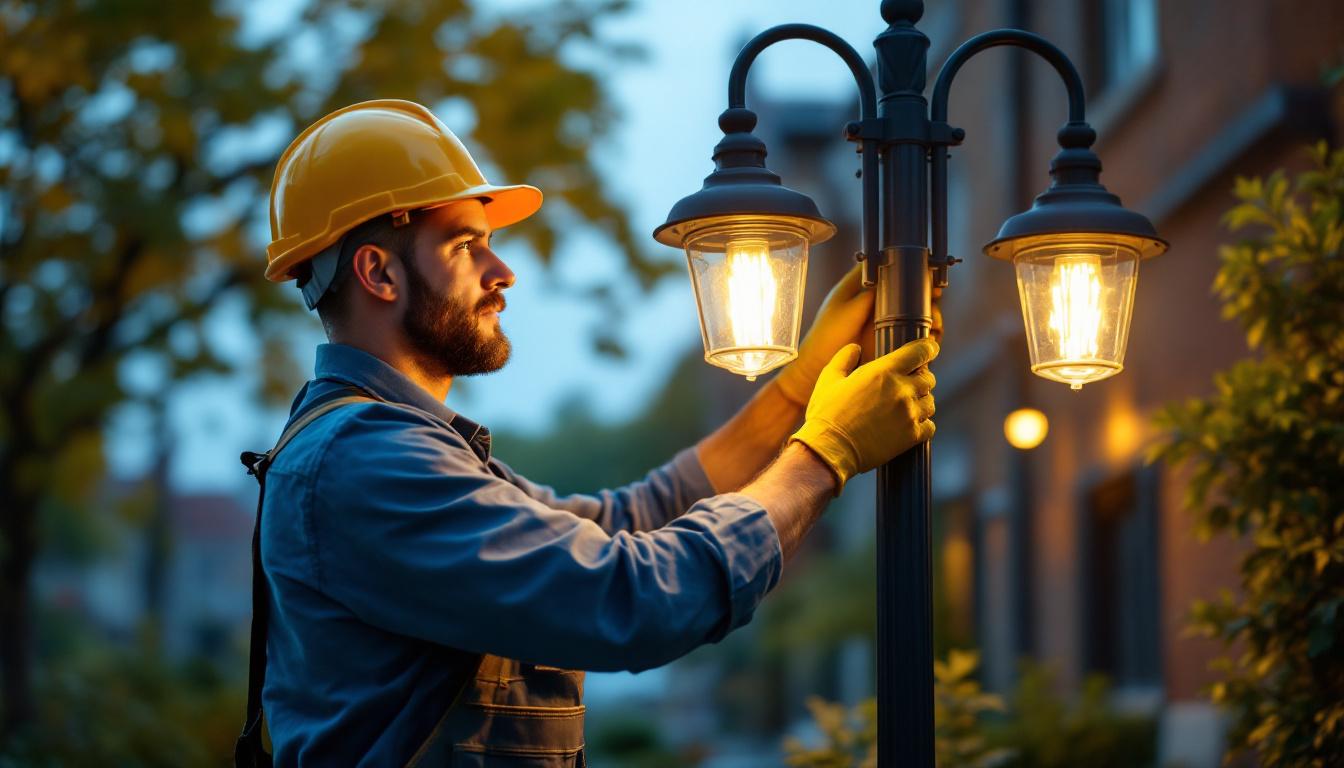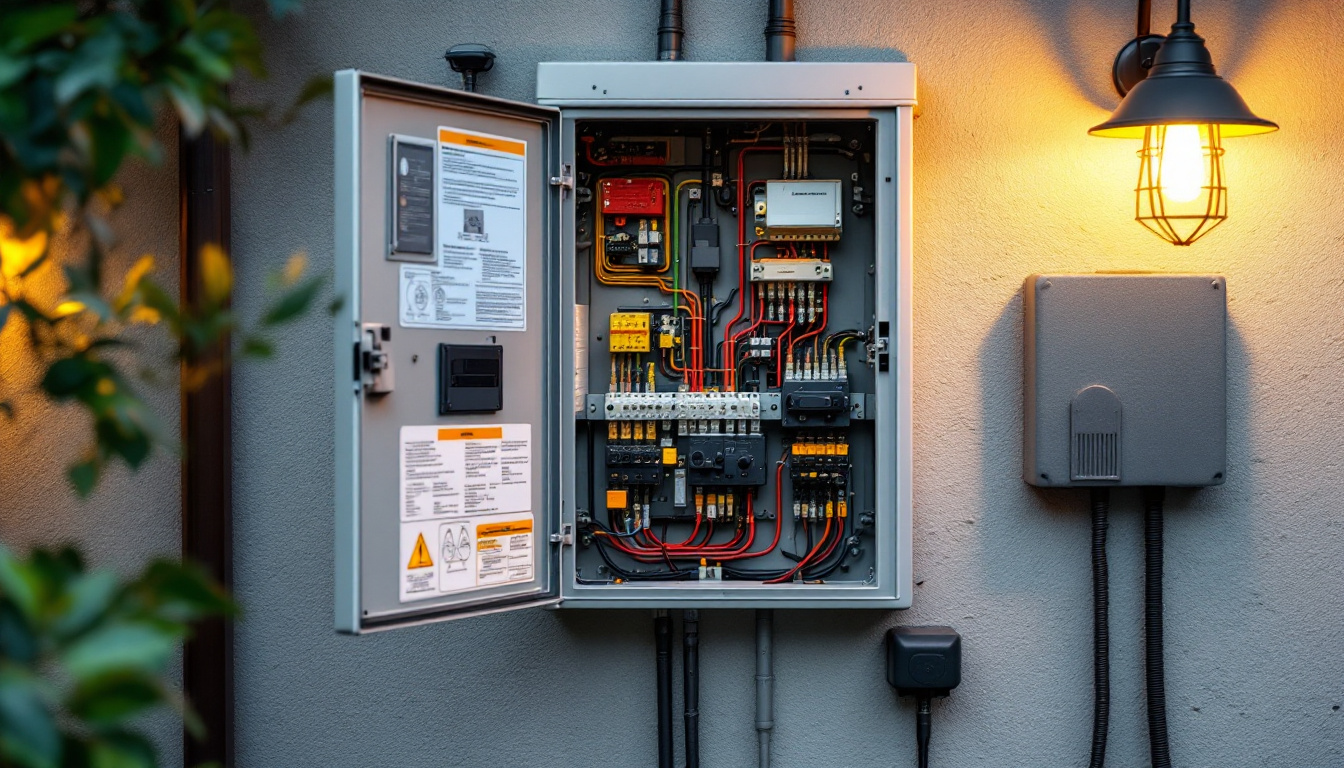
As the demand for energy-efficient lighting solutions continues to rise, LED lights have emerged as a preferred choice for both residential and commercial applications. For lighting contractors, understanding the nuances of LED technology is essential for delivering optimal solutions to clients. This guide will explore the various aspects of growing LED lights, including their benefits, installation techniques, and maintenance considerations.
Light Emitting Diodes (LEDs) are semiconductor devices that emit light when an electric current passes through them. Unlike traditional incandescent bulbs, LEDs are more energy-efficient, have a longer lifespan, and produce less heat. This section delves into the fundamental principles of LED technology and its advantages over conventional lighting options.
LEDs work on the principle of electroluminescence, where electrons recombine with holes in the semiconductor material, releasing energy in the form of photons. This process is highly efficient, leading to lower energy consumption and reduced electricity bills for end-users. Understanding this science is crucial for contractors who aim to explain the benefits of LED lighting to their clients. The materials used in LEDs, such as gallium nitride or indium gallium phosphide, play a significant role in determining the color and efficiency of the emitted light. As technology advances, researchers are continually exploring new materials and designs to enhance the performance and versatility of LEDs, making them suitable for an even broader range of applications.
LED lights offer numerous advantages, making them a compelling choice for various applications. Some of the key benefits include:
In addition to these benefits, LEDs also offer superior lighting quality. They provide instant illumination without the warm-up time associated with some fluorescent lights, and their ability to produce a wide range of colors without the use of filters makes them ideal for various settings, from residential to commercial. Furthermore, the directional nature of LED light allows for better control over where the light is emitted, reducing light pollution and enhancing the efficiency of lighting designs. This characteristic is particularly advantageous in outdoor applications, where focused lighting can improve safety and visibility without wasting energy on illuminating unnecessary areas.
As a lighting contractor, it is essential to be familiar with the various types of LED lights available in the market. Each type serves different purposes and can be tailored to meet specific client needs.
Residential LED lighting options include bulbs, downlights, and strip lights. These products are designed to enhance the aesthetics of homes while providing energy-efficient illumination. Contractors should consider factors such as color temperature and brightness when recommending residential solutions. For instance, warm white LEDs are often preferred in living areas to create a cozy atmosphere, while cooler tones may be more suitable for kitchens and workspaces. Additionally, smart LED bulbs that can be controlled via mobile apps or voice commands are becoming increasingly popular, allowing homeowners to customize their lighting experience effortlessly.
In commercial settings, LED fixtures are often used for general lighting, task lighting, and accent lighting. Options like panel lights, high-bay lights, and floodlights are popular choices. Understanding the unique requirements of commercial spaces, such as lighting levels and energy codes, is critical for successful installations. Furthermore, energy-efficient LED systems can significantly reduce operational costs, making them an attractive option for businesses looking to minimize expenses. Many commercial spaces are also incorporating tunable white lighting, which allows for adjustments in color temperature throughout the day, promoting productivity and well-being among employees.
Outdoor LED lighting encompasses landscape lighting, security lights, and streetlights. These fixtures not only enhance safety and security but also improve the visual appeal of outdoor spaces. When working on outdoor projects, contractors must consider factors like weather resistance and light pollution. For example, selecting fixtures with appropriate IP ratings ensures that the lights can withstand harsh weather conditions, while designs that minimize glare and light spillage can help protect nocturnal wildlife. Additionally, solar-powered LED options are gaining traction, providing an eco-friendly solution for outdoor lighting that reduces reliance on grid electricity and can be particularly beneficial in remote areas.
Proper installation is key to maximizing the performance and longevity of LED lights. This section outlines essential techniques and best practices for lighting contractors.
Before installation, it is vital to plan the layout carefully. This includes determining the optimal placement of fixtures to achieve the desired lighting effect. Factors such as room size, ceiling height, and the purpose of the space should be taken into account. Utilizing lighting design software can aid in visualizing the layout and ensuring even light distribution. Additionally, considering the color temperature of the LEDs is crucial, as it can significantly affect the ambiance of the room. Warmer tones are often preferred for residential settings to create a cozy atmosphere, while cooler tones may be more suitable for workspaces where focus and alertness are paramount.
LED lights typically require specific wiring configurations to operate efficiently. Contractors should ensure that the electrical system is compatible with the LED fixtures being installed. Proper connections are crucial to prevent issues such as flickering or dimming, which can occur if the wiring is inadequate. It’s also advisable to use high-quality connectors and to follow the manufacturer’s guidelines closely. Furthermore, implementing a circuit design that allows for future expansion can be beneficial, especially in commercial settings where lighting needs may evolve over time. This foresight can save time and resources in the long run, ensuring that the installation remains flexible and adaptable.
After installation, testing the lighting system is essential. This involves checking for any issues, such as flickering or color inconsistencies, and making necessary adjustments. Commissioning the system ensures that it operates as intended and meets client expectations. During this phase, it is also important to educate clients on the operation and maintenance of their new lighting system. Providing them with information on how to adjust settings, troubleshoot minor issues, and understand energy efficiency can enhance their satisfaction and prolong the lifespan of the installation. Additionally, documenting the testing results and any adjustments made can serve as a valuable reference for future maintenance or upgrades, ensuring that the system remains in optimal condition over time.
Maintaining LED lighting systems is vital for ensuring their longevity and performance. Regular maintenance can prevent issues and extend the lifespan of the fixtures.
Dust and debris can accumulate on LED fixtures, affecting their performance. Regular cleaning is necessary to maintain optimal brightness and efficiency. Contractors should advise clients on proper cleaning techniques, such as using a soft cloth and avoiding harsh chemicals that could damage the fixtures.
Monitoring the performance of LED lights can help identify potential issues early on. Contractors can recommend the use of smart lighting systems that provide real-time data on energy consumption and performance metrics. This proactive approach allows for timely maintenance and adjustments.
As technology advances, upgrading LED lighting systems may become necessary to enhance performance or meet new energy standards. Contractors should stay informed about the latest developments in LED technology and be prepared to recommend upgrades to clients when appropriate.
While LED lighting offers numerous benefits, contractors may encounter challenges during projects. Being aware of these potential issues can help in finding effective solutions.
One common challenge is compatibility with existing electrical systems. Older wiring may not support the low voltage or specific requirements of LED fixtures. Contractors should assess the electrical infrastructure before installation and make necessary adjustments to ensure compatibility.
Another challenge is achieving the desired color rendering and temperature. Different LED products may have varying color temperatures, which can affect the overall ambiance of a space. Contractors should work closely with clients to select the right products that align with their vision and needs.
While LED lights can lead to long-term savings, the initial investment may be higher than traditional lighting options. Contractors should be prepared to explain the long-term benefits and cost savings associated with LED lighting to help clients make informed decisions.
The LED lighting industry is continually evolving, with new trends and technologies emerging regularly. Staying ahead of these trends can provide contractors with a competitive edge.
Smart lighting technology is gaining traction, allowing users to control their lighting systems remotely through smartphones or voice-activated devices. This trend not only enhances convenience but also promotes energy efficiency. Contractors should familiarize themselves with smart lighting options and consider incorporating them into their offerings.
Human-centric lighting focuses on creating environments that support human well-being by mimicking natural light patterns. This approach is particularly relevant in workplaces and healthcare settings. Contractors should explore human-centric lighting solutions to meet the growing demand for healthier lighting environments.
As sustainability becomes a priority for many businesses and homeowners, the demand for eco-friendly lighting solutions is on the rise. Contractors should stay informed about sustainable practices and materials in the LED lighting industry to align with clients’ values and preferences.
As the landscape of lighting continues to evolve, LED lights remain at the forefront of innovation and efficiency. For lighting contractors, understanding the intricacies of LED technology, installation techniques, and maintenance practices is essential for delivering high-quality solutions to clients. By staying informed about industry trends and challenges, contractors can position themselves as experts in the field, ultimately driving their business growth.
Incorporating LED lighting into projects not only enhances the aesthetic appeal of spaces but also contributes to energy savings and environmental sustainability. By embracing this technology, lighting contractors can play a pivotal role in shaping the future of illumination.
Ready to elevate your lighting projects with the most innovative LED solutions? At LumenWholesale, we provide lighting contractors like you with the highest quality, spec-grade LED products at prices that can’t be beaten. Say goodbye to unnecessary markups and hello to a vast selection of reliable lighting that meets the strictest industry standards. With free shipping on bulk orders, LumenWholesale is your go-to source for premium lighting that combines quality, affordability, and convenience. Don’t compromise on your lighting needs—choose Wholesale Lighting at the Best Value and make your next project shine.

Discover the essential best practices lighting contractors use when working with large solar lantern lights.

Discover the insider secrets of lighting contractors to master the art of pole lighting.

Unlock the secrets of exterior electrical boxes with this essential guide for lighting contractors.

Discover how lighting contractors can enhance their projects and boost client satisfaction by mastering the art of installing lights under cabinets.